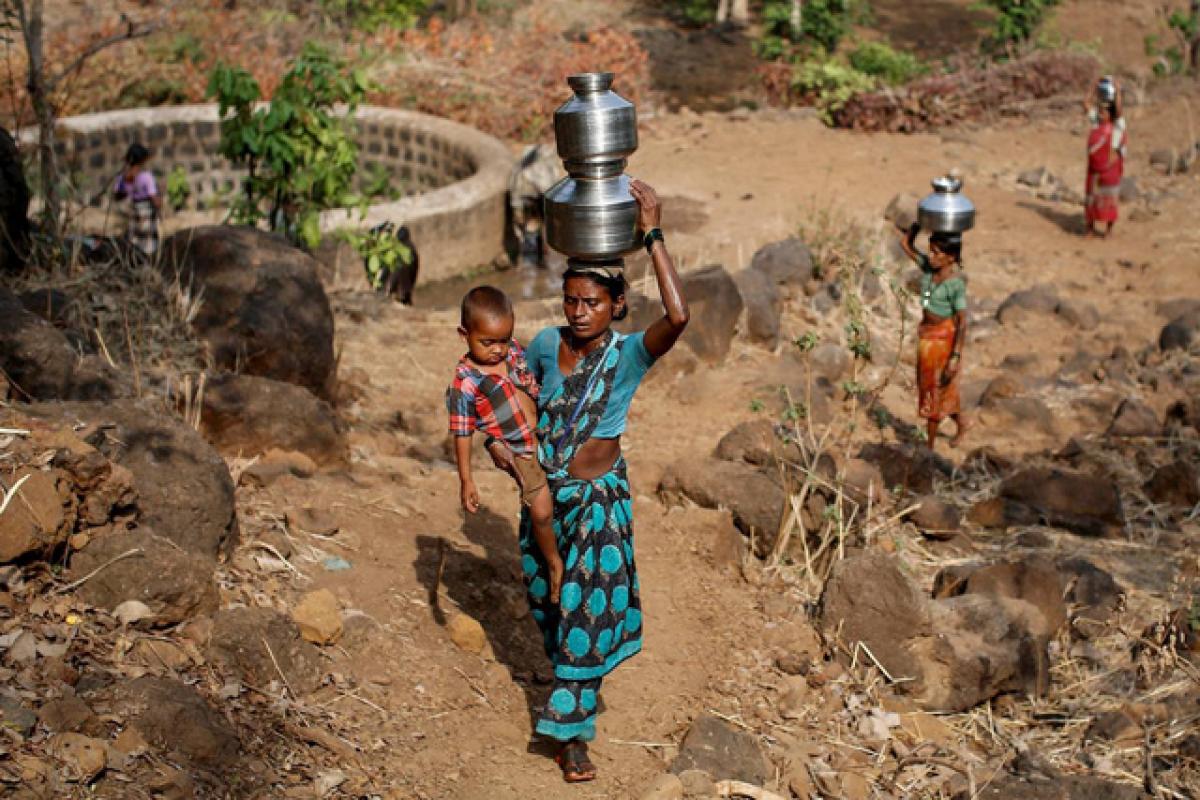Live
- Kejriwal writes to HM Shah on law and order, seeks urgent meeting
- Big e-commerce firms to adopt Safety Pledge on National Consumer Day
- Cop ends life over torture by wife, father-in-law in Bengaluru
- Indian Constitution longest and most beautiful, Kiren Rijiju lauds its inclusive character
- BSNL's Rs 333 Plan Challenges Airtel and Jio with 1300GB Data: Details
- PM Modi's appeal to buy Khadi garments leads to huge demand in Bihar's Samastipur
- Mohammad Amir announces retirement from international cricket
- Chandrababu supports One Nation, One Election System, says elections in 2029
- Cong not pursuing politics of vengeance: D. K. Shivakumar on Covid 'scam' FIR
- Mexican consulates to strengthen support for nationals in face of US deportation
Just In

High on intent, low on investments. The recently concluded Socio-economic Caste Census (SECC) is an exercise that draws considerable amount of awe for its sheer reach. The census surveyed 23.49 crore households across India using 6.4 lakh electronic handheld devices to arrive at a database of all households.
The Union Budget outlay for all social sector ministries has registered a drop from 1.92 per cent of the GDP (2013-14) to a deplorable 1.68 per cent in 2015-16. The budget for ICDS fell from Rs18,391 crore (2014-15 RE) to an unacceptable Rs8,449 crore (2015-16)
The recently concluded Socio-economic Caste Census (SECC) is an exercise that draws considerable amount of awe for its sheer reach. The census surveyed 23.49 crore households across India using 6.4 lakh electronic handheld devices to arrive at a database of all households.

The government's intent in using the data thrown up by the SECC is quoted in its own press release where it states that “SECC provides an opportunity to simultaneously address the multi-dimensionality of poverty by addressing the deprivation of households in education, skills, housing, employment, health, nutrition, water, sanitation, social and gender mobilization and entitlement.”
This article attempts to assess whether the government’s investment into the social sector is indicative of this intent. The SECC results state that there are 5.37 crore households who are landless and derive a majority of their income from manual labour.
It also states that in close to 75 per cent of rural households, the main earning member earns less than Rs 5,000 per month. The MGNREGA, legislation passed to provide employment in the form of manual labour to all rural households on demand, is an initiative of the government to enhance the basic incomes of this very constituency.
However, MGNREGA allocations have registered a continuous dip in real terms - from 0.45 per cent of the GDP at market prices in 2011-12, to a meagre 0.32 per cent in 2014-15. As per the SECC, there are 68.96 lakh female-headed households with no adult members between the age of 16-59.
Given the precariousness of the economic situation that such households may be prone to, the presence of preventive social security mechanisms specifically targeting such households should be a priority. However, the government’s will as demonstrated by its budgetary outlays are contradictory.
Allocation for women specific schemes such as Beti Bachao Beti Padhao, National Mission for Empowerment of Women, Rajiv Gandhi Scheme for empowerment of Adolescent Girls fell from Rs1,075 crore (2014-15 RE) to Rs587 crore (2015-16 BE).
The SECC results state that fewer than 10 per cent of youth of rural households make it to the higher secondary level or above and just 3.41 per cent of households have a family member who is at least a graduate. Households with no literate adult above the age of 25 amount to a staggering 4.21 crore. In light of this dismal statistic, the government’s allocation to a significant sector like education is even more shocking.
The allocation to Sarva Shiksha Abhiyan, the only centrally-funded intervention designed to achieve universalized elementary education fell from Rs24,380 crore (2014-15 RE) to Rs19,800 crore (2015-16 BE), while the allocation for the Department of School Education and Literacy fell from Rs46,805 crore (2014-15 RE) to Rs42,200 crore (2015-16).
Then, given the unanimous scientific agreement on the role of adequate nutrition in enhancing children’s learning abilities through the education system, the budget of the Integrated Child Development Services (ICDS) fell from Rs18,391 crore (2014-15 RE) to an unacceptable Rs8,449 crore (2015-16).
Rural housing seemed to be one of the fortunate sectors that received the government's attention, at least in terms of public articulation. The SECC results have confirmed the need for such attention, given that 13.25 per cent of rural households live with only one room, a temporary wall and a temporary roof. But the trend of cutting social sector budgets continues unabated even in this case.
The allocation of Indira Awas Yojana - the only centrally funded intervention to provide rural housing - fell from Rs16,000 crore (2014-15 RE) to Rs10,025 crore (2015-16 BE). The Union Budget outlay for all social sector ministries has registered a drop from 1.92 per cent of the GDP (2013-14) to a deplorable 1.68 per cent in 2015-16.
In this context, no number of investor summits, foreign MoUs and attempts at canvassing an image of India to the outside world can compensate for the irreversible steps being taken to slowly dismantle its social sector infrastructure through inadequate funding.
By Rakshita Swamy

© 2024 Hyderabad Media House Limited/The Hans India. All rights reserved. Powered by hocalwire.com







